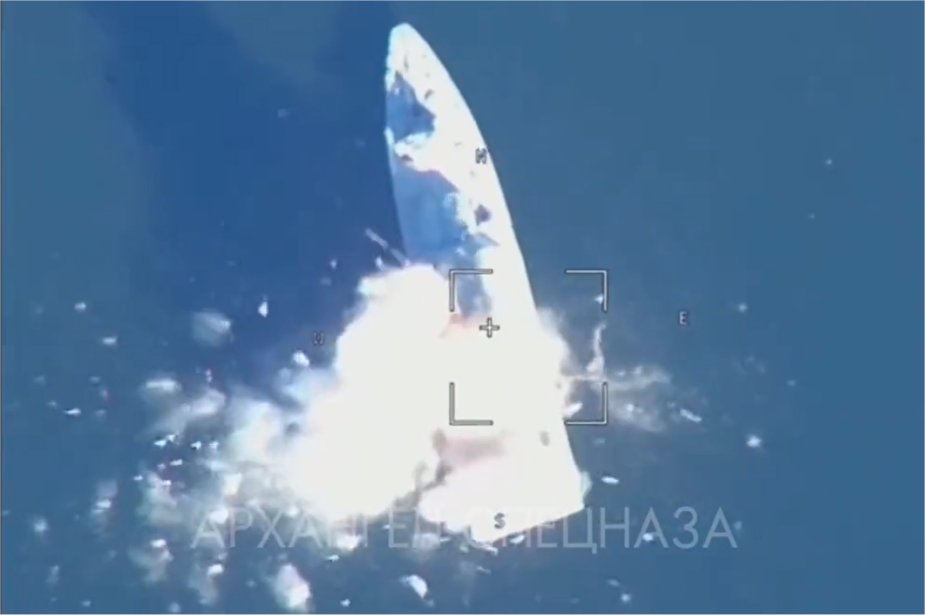Breaking news
Russian loitering munition Lancet hits Ukrainian Gyurza M class gunboat for first time.
According to information published by Военный Осведомитель on November 4, 2022, a Russian loitering munition Lancet would have struck what could be a Ukrainian Gyurza M class gunboat.
Follow Navy Recognition on Google News at this link
 Ukrainian Gyurza M class gunboat hitting by Russian UAV Lancet. (Picture source: Военный Осведомитель)
Ukrainian Gyurza M class gunboat hitting by Russian UAV Lancet. (Picture source: Военный Осведомитель)
The ZALA Lancet is a UAV/loitering munition developed by Russian company ZALA Aero Group (part of Kalashnikov Concern) for the Russian Armed Forces.
It was first unveiled in June 2019 during the ARMY-2019 military expo held in Moscow. It is a further development of the ZALA KYB-UAV, also known as KUB-BLA, loitering munition.
The ZALA Lancet can be used for both reconnaissance and strike missions, it has a maximum range of 40 km and maximum takeoff weight (MTOW) up to 12 kg.
In combat mode, it can be armed either with high-explosive (HE) or HE-fragmentation warheads. It features optical-electronic guidance as well as TV guidance unit, that allows the munition to be controlled on the terminal stage of flight. The drone features intelligence, navigation and communications modules.
About the Gyurza M class
The Project 58155 Gyurza-M class is a series of small armored gunboats in service with the Ukrainian Navy. The first two vessels were laid down at the Kuznia na Rybalskomu (previously Leninska Kuznia) shipbuilding plant in October 2012. Originally it was planned to build nine such vessels by 2017.
The range of missions for the Gyurza-M could include security patrolling of littoral waters; river and lake policing; fighting small hostile ships; protection of off-shore infrastructures; support for sea-to-land and border guard operations; support for maritime safety; and reconnaissance and logistics support.
The gunboats have a length of 23.0 m (75 ft 6 in), a beam of 4.8 m (15 ft 9 in), and a draught of 1.0 m (3 ft 3 in). They can reach a top speed of 25 knots (46 km/h; 29 mph).




























